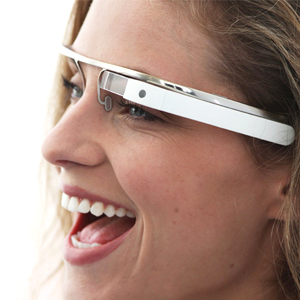Google’s co-founder Sergey Brin loves the internet so much that he’s found a way to use it literally all the time. His new Google endeavour, Project Glass, overlays information from the web, such as weather reports, messages from friends and map directions, on top of the real world through one of the glasses’ lenses. The specs are also fitted with a camera that lets you take pictures or record video without much fuss. It’s a revolutionary bit of tech, it’s just a shame you’ll be a bit of a social pariah if you wear them in public.
The core of Google Glass is its tiny prism display which sits not in your eyeline, but a little above it. You can see what is on the display by glancing up. The glasses also have an embedded camera, microphone, GPS and, reportedly, use bone induction to give you sound.
Voice control is used to control the device; you say ‘ok glass’ to get a range of options including taking pictures, videos, send messages using speech to text, ‘hang out’ with people or get directions to somewhere. You access these options by saying them out loud.
Most of this functionality is self explanatory; hang out is Google’s video conferencing technology and allows you to talk to a people over web cam, and stream them what you are seeing and the directions use Google Maps and the inbuilt GPS to help you find your way.
The results are displayed on the prism – essentially putting data into your view like a head up display (HUD). It’s potentially incredibly handy. Also rather nifty is the potential for automatic voice and speech recognition – and Google has given its Glass project a big boost by snapping up specialists DNNresearch






